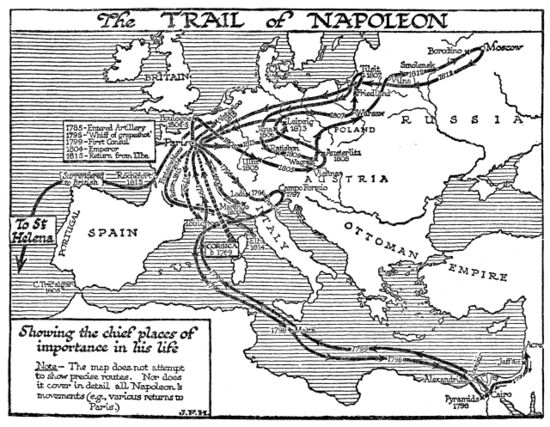imported>Anthony.Sebastian |
imported>John Stephenson |
| (146 intermediate revisions by 5 users not shown) |
| Line 1: |
Line 1: |
| == '''[[Volatility (chemistry)]]''' ==
| | {{:{{FeaturedArticleTitle}}}} |
| ''by [[User:Milton Beychok|Milton Beychok]] (and [[User:Anthony.Sebastian|Anthony.Sebastian]])
| | <small> |
| | | ==Footnotes== |
| ----
| |
| {{Image|Vapor Pressure Chart2.png|right|250px|Example vapor pressure graphs of various liquids.}} | |
| | |
| In [[chemistry]] and [[physics]], '''volatility''' is a term used to characterize the tendency of a substance to vaporize.<ref>'''Note:''' To vaporize means to become a [[vapor]], the gaseous state of the substance.</ref> It is directly related to a substance' s [[vapor pressure]]. At a given [[temperature]], a substance with a higher vapor pressure will vaporize more readily than a substance with a lower vapor pressure.<ref>[http://www.bae.uky.edu/~snokes/BAE549thermo/gasesvapor.htm Gases and Vapor] ([[University of Kentucky]] website)</ref><ref>{{cite book|author=James G. Speight|title=The Chemistry and Technology of Petroleum|edition=4th Edition|publisher=CRC Press|date=2006|isbn=0-8493-9067-2}}</ref><ref name=Kister>{{cite book|author=Kister, Henry Z.|title=[[Distillation Design]]|edition=1st Edition|publisher=McGraw-Hill|year=1992|isbn=0-07-034909-6}}</ref> In other words, at a given temperature, the more volatile the substance the higher will be the pressure of the vapor in dynamic equilibrium with its vaporizing substance—i.e., when the rates at which molecules escape from and return into the vaporizing substance are equal.
| |
| | |
| In common usage, the term applies primarily to [[liquid]]s. However, it may also be used to characterize the process of [[Sublimation (chemistry)|sublimation]] by which certain [[solid]] substances such as [[ammonium chloride]] (NH<sub>4</sub>Cl) and [[dry ice]], which is solid [[carbon dioxide]] (CO<sub>2</sub>), change directly from their solid form to a vapor without becoming a liquid.
| |
| | |
| Any substance with a significant vapor pressure at temperatures of about 20 to 25 °[[Celsius (unit)|C]] (68 to 77 °[[Fahrenheit (unit)|F]]) is very often referred to as being ''volatile''.
| |
| | |
| === Vapor pressure, temperature and boiling point ===
| |
| | |
| The vapor pressure of a substance is the pressure at which its gaseous (vapor) phase is in equilibrium with its liquid or solid phase. It is a measure of the tendency of [[molecule]]s and [[atom]]s to escape from a liquid or solid.
| |
| | |
| At [[atmospheric pressure]]s, when a liquid's vapor pressure increases with increasing temperatures to the point at which it equals the atmospheric pressure, the liquid has reached its [[boiling point]], namely, the temperature at which the liquid changes its state from a liquid to a gas throughout its bulk. That temperature is very commonly referred to as the liquid's ''normal boiling point''.
| |
| | |
| Not surprisingly, a liquid's normal boiling point will be at a lower temperature the greater is the tendency of its molecules to escape from the liquid, namely, the higher is its vapor pressure. In other words, the higher is the vapor pressure of a liquid, the higher is the volatility and the lower is the normal boiling point of the liquid. The adjacent vapor pressure chart graphs the dependency of vapor pressure upon temperature for a variety of liquids<ref name=Perry>{{cite book|author=R.H. Perry and D.W. Green (Editors)|title=Perry's Chemical Engineers' Handbook | edition=7th Edition|publisher=McGraw-Hill|year=1997|id=ISBN 0-07-049842-5}}</ref> and also confirms that liquids with higher vapor pressures have lower normal boiling points.
| |
| | |
| | |
| ''[[Volatility (chemistry)|.... (read more)]]''
| |
| | |
| {| class="wikitable collapsible collapsed" style="width: 90%; float: center; margin: 0.5em 1em 0.8em 0px;"
| |
| |-
| |
| ! style="text-align: center;" | [[Volatility (chemistry)#References|notes]]
| |
| |-
| |
| |
| |
| {{reflist|2}} | | {{reflist|2}} |
| |}
| | </small> |
Latest revision as of 10:19, 11 September 2020
Napoleon (Napoleon Bonaparte or, after 1804, Napoleon I, Emperor of the French) was a world historic figure and dictator of France from 1799 to 1814. He was the greatest general of his age--perhaps any age, with a sure command of battlefield tactics and campaign strategies, As a civil leader he played a major role in the French Revolution, then ended it when he became dictator in 1799 and Emperor of France in 1804 He modernized the French military, fiscal, political legal and religious systems. He fought an unending series of wars against Britain with a complex, ever-changing coalition of European nations on both sides. Refusing to compromise after his immense defeat in Russia in 1812, he was overwhelmed by a coalition of enemies and abdicated in 1814. In 1815 he returned from exile, took control of France, built a new army, and in 100 days almost succeeded--but was defeated at Waterloo and exiled to a remote island. His image and memory are central to French national identity, but he is despised by the British and Russians and is a controversial figure in Germany and elsewhere in Europe.
Rise to Power
Once the Revolution had begun, so many of the aristocratic officers turned against the Revolutionary government, or were exiled or executed, that a vacuum of senior leadership resulted. Promotions came very quickly now, and loyalty to the Revolution was as important as technical skill; Napoleon had both. His demerits were overlooked as he was twice reinstated, promoted, and allowed to collect his back pay. Paris knew him as an intellectual soldier deeply involved in politics. His first test of military genius came at Toulon in 1793, where the British had seized this key port. Napoleon, an acting Lieutenant-Colonel, used his artillery to force the British to abandon the city. He was immediately promoted by the Jacobin radicals under Robespierre to brigadier-general, joining the ranks of several brilliant young generals. He played a major role in defending Paris itself from counter-revolutionaries, and became the operational planner for the Army of Italy and planned two successful attacks in April 1794. He married Josephine (Rose de Beauharnais) in 1796, after falling violently in love with the older aristocratic widow.[1]
- ↑ Englund pp 63-73, 91-2, 97-8
